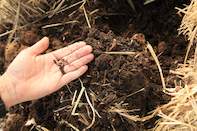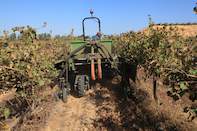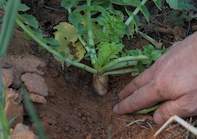Regenerative agriculture is a production method built on a “soil health mind set” – an understanding that the soil is not a growth medium but a living dynamic ecosystem. Production practices, as such are not set in stone, but continuously adapted to what is happening in and around a plant.

Production Practices
The farming method entails all the principles of conservation farming, such as minimum to no-tillage, crop rotation and stubble retention, but also uses cover crops, compost teas, compost and manure in an attempt to reduce and eliminate the use of synthetic fertilisers, pesticides and genetically modified organism.

Whereas many extreme conservation farmers have downscaled animal production or keep their animals off their high potential grain or crop lands to prevent compaction, regenerative farmers see animals as an integral part of their production system.
The animals not only help to diversify production risks and add value to lands, but animal grazing is carefully managed to improve soil conditions, which in turn helps to lower input costs and improve crop health. The animal’s urine and manure, for example, will help to build soil carbon levels, whereas their grazing habits may help to stimulate growth or loosen the soil, as is the case with poultry and pigs.
The soil should always be covered according to this production philosophy, either with stubbles or multispecies cover crops. Having a constant cover helps to keep the soil cool while reducing evaporation.
The ideal is to get as many cover crops in the system as possible, since the cover crops will create a beneficial habitat for organisms in and below the ground, which will help with pest management, while improving the soil by loosening it with different types of root systems.
The cover crops may also offer other eco-services, with mustard species helping to reduce problems with certain nematodes and legume species having the ability to fix nitrogen. The breakdown of these species helps to improve the soil structure while adding humus to the soil.
Application

Regenerative farming was started by farmers, who became concerned over the negative impact that fertilisers and pesticides were having on production and the environment. These farmers have systematically developed farming practices that helped them to improve soil structure and health, the water holding capacity of soils and plant resilience, while cutting down on pesticides and fertilisers.
Their results often contradict what science has found up until now, and have sparked a lot of research to validate and better understand their outcomes since the 1990s. Regenerative farmers blame the contradictions on the fact that most agricultural production research up until now has been conducted on “degraded” systems that are sustained by synthetic fertilisers.
Allan Savory, a Zimbabwean ecologist and co-founder of the Savory Institute, is seen as one of the biggest pioneers of this production method.
The practice of regenerative farming was still fairly new in South Africa towards the end of 2019, but farmers have been experimenting with it in various parts of the country in both grain, vegetable and fruit production. The Western Cape Department of Agriculture has also initiated trials to evaluate the feasibility of regenerative farming along with their long-term conservation farming trials.
One of the greatest concerns at the moment is that South Africa’s production conditions might not be suited to regenerative farming. Farmers in certain parts of the country, such as the Swartland, for example, have a limited number of crops that they can incorporate into production due to climatic conditions in combination with limited market opportunities.